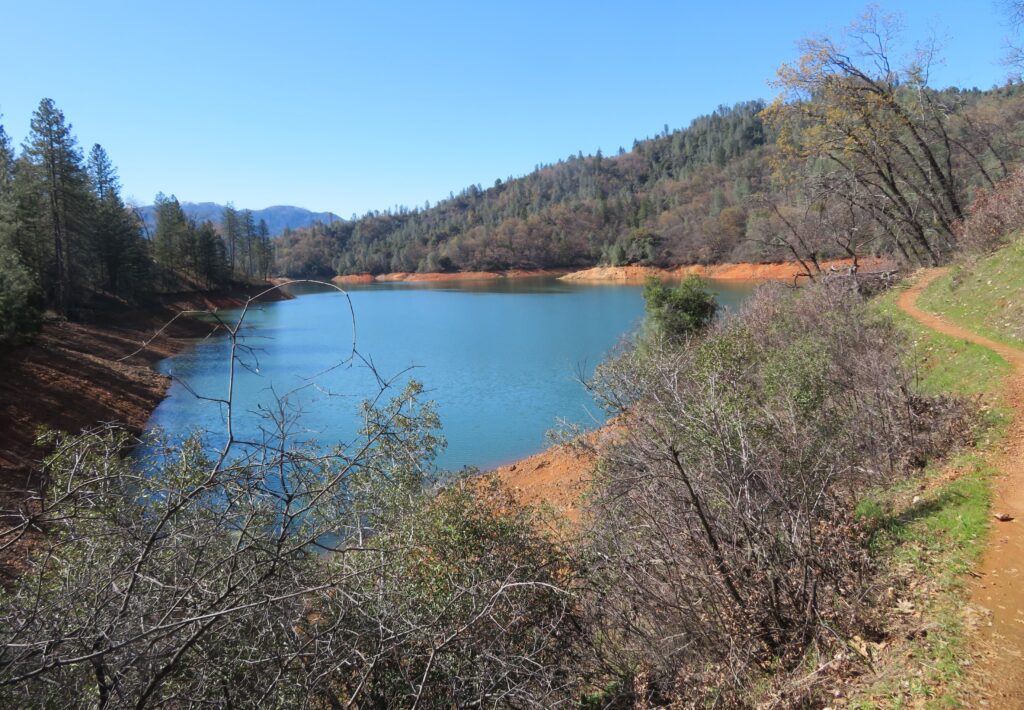
With rain predicted all day, turnout was expected to be low for the Waters Gulch Field Trip, but Ashton Smith, Spencer Henderson, and walk leader David Ledger were willing to forge ahead with the help of umbrellas on this trail with an amazing diversity of plant life.
The first section of the trail is a damp cool microclimate following a creek downstream on a north-facing slope. There was a vast diversity of plants a few of which on this half-mile or less section included milkmaids, Oregon grape, Brewer’s oak, black oak, and a mixed conifer overstory. Some of the ferns in just this short section were: fragile fern, Shasta maidenhair, narrow leaf sword fern, lace lip fern, goldback fern, and banks thick with rock polypody and licorice fern. The rare and protected Shasta snow wreath is also on this section of the trail as well. As the trail reached the stream edge, umbrella plants were flowering nicely before the huge leaves covered them later in spring. At this point, there were California bay trees, white alder, bigleaf maple, Douglas fir, Oregon ash, and black oak trees which keep this trail cool in the summer.
Leaving the creek there is one section with some wet slippery rocks with a steep small cliff to fall off if you lose your footing. Passing alumroot, checker lily, grand hounds tongue, and several lomatium and various delphinium, this west-facing section of the trail is fairly level, and under the sparse canopy were foothill ash, buckbrush, buckeyes, mountain mahogany, and more. We only walked a little over 1 ½ miles before we began to get too wet despite the umbrellas. On the way back we noticed many plants we hadn’t seen on the downhill trip.
This is a highly recommended trail to hike, except for in the hottest summer months.